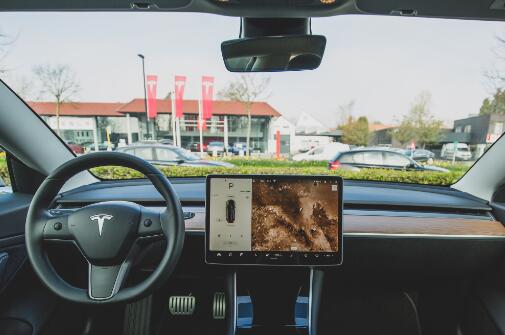Retrieving deleted videos from a Tesla vehicle involves understanding the data storage system used in these cars and the implications of video deletion. While Tesla vehicles come equipped with advanced technology, retrieving deleted files can be complex.
1. Overview of Tesla’s Video Storage System
Tesla vehicles utilize onboard storage systems to record various data, including dashcam footage, Sentry Mode recordings, and even video from the built-in camera system. This data is typically saved to a USB drive connected to the vehicle. Understanding how these systems work is crucial for data recovery.
a. Dashcam and Sentry Mode
Dashcam: This feature records video footage from the front, rear, and side cameras while driving.
Sentry Mode: This mode keeps the cameras active while the vehicle is parked, recording events around the car.

2. How Videos Are Deleted
When you delete a video from a Tesla, the file isn’t immediately overwritten. Instead, it is marked as deleted, making it invisible to the user. The actual data remains on the storage medium until new data overwrites it.
3. Steps to Attempt Recovery of Deleted Videos
If you’ve accidentally deleted videos from your Tesla, follow these steps to try and recover them:
a. Stop Using the USB Drive
As soon as you realize that videos are missing, stop using the USB drive. This prevents new data from overwriting the deleted files, increasing the chances of recovery.
b. Check the Tesla App
Sometimes, Tesla vehicles upload certain data to the cloud. Check the Tesla app on your smartphone to see if any videos were automatically saved there.
c. Examine the USB Drive
Remove the USB Drive: Safely eject the USB drive from the vehicle.
Connect to a Computer: Use a computer to access the USB drive. Depending on the operating system, you may use Windows, macOS, or Linux.
File Recovery Software: Consider using file recovery software. Some popular options include:
Recuva: A free tool for Windows that can recover lost files.
PhotoRec: A powerful open-source software that can recover files from various storage devices.
Disk Drill: Available for both Windows and macOS, it provides a user-friendly interface for recovery.
4. Running File Recovery Software
After choosing a recovery software, follow these steps:
Install the Software: Download and install the file recovery program on your computer.
Select the USB Drive: Open the program and select the USB drive to scan for deleted files.
Run the Scan: Start the scanning process. This may take some time, depending on the size of the drive.
Review Found Files: Once the scan is complete, review the recovered files. Look for videos that were deleted.
Save Recovered Files: If you find the deleted videos, save them to a different drive to prevent overwriting.
5. Professional Data Recovery Services
If software recovery methods do not yield results, consider consulting a professional data recovery service. These specialists use advanced techniques to recover lost data and can handle complex recovery situations.
6. Preventative Measures
To avoid losing important videos in the future, consider these tips:
Regular Backups: Regularly backup your USB drive to your computer or cloud storage.
Duplicate Storage: Use multiple USB drives to store important recordings.
Organize Files: Periodically sort and organize your files to keep track of important recordings.
7. Understanding Legal Considerations
When recovering videos, especially those involving surveillance, it’s essential to be aware of legal implications. Depending on your jurisdiction, recording and storing video footage may have specific regulations. Always ensure that your recovery efforts comply with local laws.
Retrieving deleted videos from a Tesla is possible, but success depends on several factors, including the immediacy of recovery efforts and the methods employed. By following the steps outlined above, you can maximize your chances of recovering lost video files. Regular backups and understanding your vehicle’s technology can help prevent future data loss.
About us and this blog
Panda Assistant is built on the latest data recovery algorithms, ensuring that no file is too damaged, too lost, or too corrupted to be recovered.
Request a free quote
We believe that data recovery shouldn’t be a daunting task. That’s why we’ve designed Panda Assistant to be as easy to use as it is powerful. With a few clicks, you can initiate a scan, preview recoverable files, and restore your data all within a matter of minutes.

 Try lt Free
Try lt Free Recovery success rate of up to
Recovery success rate of up to









